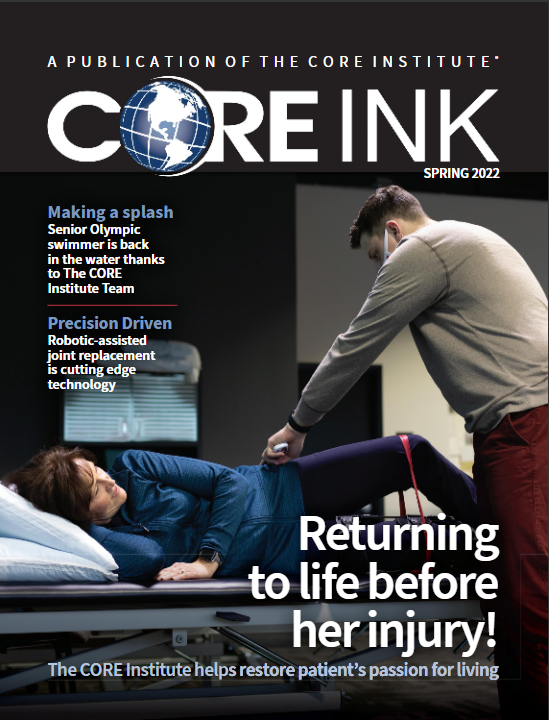More than 3 million people are treated in emergency rooms every year as the result of a fall, according to the Centers for Disease Control. It also reports that one in five falls results in serious injuries, which makes fall prevention more important than ever.
The CORE Institute’s Dr. Victor Nwosu, says he educates his patients about three areas when it comes to fall prevention — biological, behavioral and environmental.
Biological Risks
Biological risks for falls include chronic health conditions, muscle weakness, side effects to medications or vision problems. Prevention tips include:
- Regular visits to a primary care physician to review medications
- Annual vision checks
- Having feet checked for neuropathy
- Exercise
Dr. Nwosu recommends patients participate in yoga or Tai Chi. “It strengthens the patient and provides balance. It’s good for building both upper and lower body strength,” he said.
Behavioral Risks
Behavioral risks for falls include inactivity and risky behaviors. Walking outside in inclement weather without appropriate shoes and drinking too much alcohol are also behavioral risk factors.
“Trying to get something out of their closet while standing on something unstable or not asking for help could be a risk … It’s better to ask for help than to end up in the emergency room with a fracture,” Dr. Nwosu said.
Dr. Nwosu once again recommends appropriate exercise when possible, plus investing in sturdy, supportive shoes and not being afraid to ask for help when needed.
Environmental risks
Environmental risks for falls include:
- Clutter in the home
- Poor lighting
- Lack of grip bars in bathrooms
- Area rugs
- No stair railings
Installing safety bars and better lighting in the home are good ways to reduce these environmental risks and Dr. Nwosu strongly recommends a weekly cleanup of clutter. “If you’re having a hard time navigating through your living room, it’s time to clean it up,” he said.
While some people may have a hard time accepting the need to make changes in the home or letting others help them, Dr. Nwosu says they often change their minds when they realize just how dangerous falling can be.
“I explain to my patients all the statistics surrounding falls and why they want to avoid them,” Dr. Nwosu said. “You could easily end up in a long-term care facility for a year, or worse. Plus, those who fall once are 2 to 3 times more likely to fall again.”
Conducting routine reviews of biological, behavioral and environmental risk factors for falls can go a long way in preventing them.
SUBSCRIBE TO CORE INK NEWSLETTER
Sign up to receive stories and information from The CORE Institute, including expertise from our providers and news about the latest technology advancements helping our communities.

